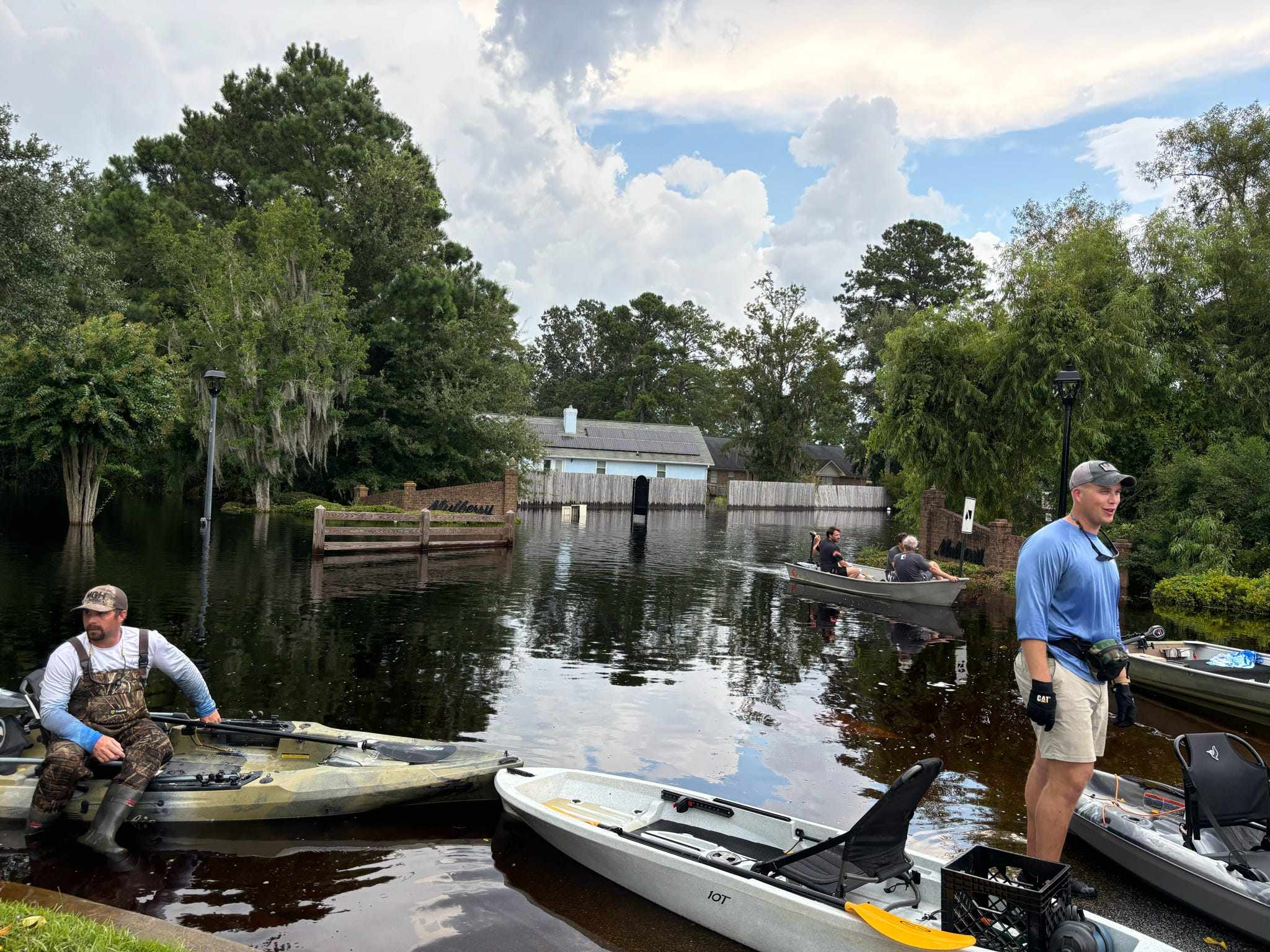By My'Kayle Pugh
Editor's Note: This is the first part of an investigative series by My'Kayle Pugh about the aftermath of Tropical Storm Debby in the Richmond Hill/Bryan County area.
THE AIR is heavy in Richmond Hill. This coastal town, known for its close proximity to the Ogeechee River, is no stranger to the oppressive nature of humidity – the kind that settles on your shoulders and makes every step feel like a struggle.
But since August 5, the air in town has been weighed down by a different force of nature.
According to the National Hurricane Center (NHC), Hurricane Debby “began as a tropical wave” on July 26. By August 4, it had strengthened into a Category 1 Hurricane as it made landfall in Florida, and then slowed to a Tropical Storm as it moved across southeastern Georgia on August 5.
For many of us in the Greater Savannah area, we thought nothing of it. Hurricanes are a fact of life, a conversation with Mother Nature each year, from June to November, where she speaks and we listen – sometimes.
Likewise, flooding is a common topic in this conversation, but the extent of its devastation can feel like a dice roll to civilians, leaving many who live in coastal Georgia in a suspended state of anxiety.
Recently, that anxiety quickly soured into a terrible reality. Tropical Storm Debby hit Richmond Hill and surrounding communities on August 5 and left the area on August 7.
By August 8, residents began sounding the alarm for potential flooding.
By August 10, that water rose higher and higher until many were forced out of their homes.
By August 12, many realized that there was no home to return to.
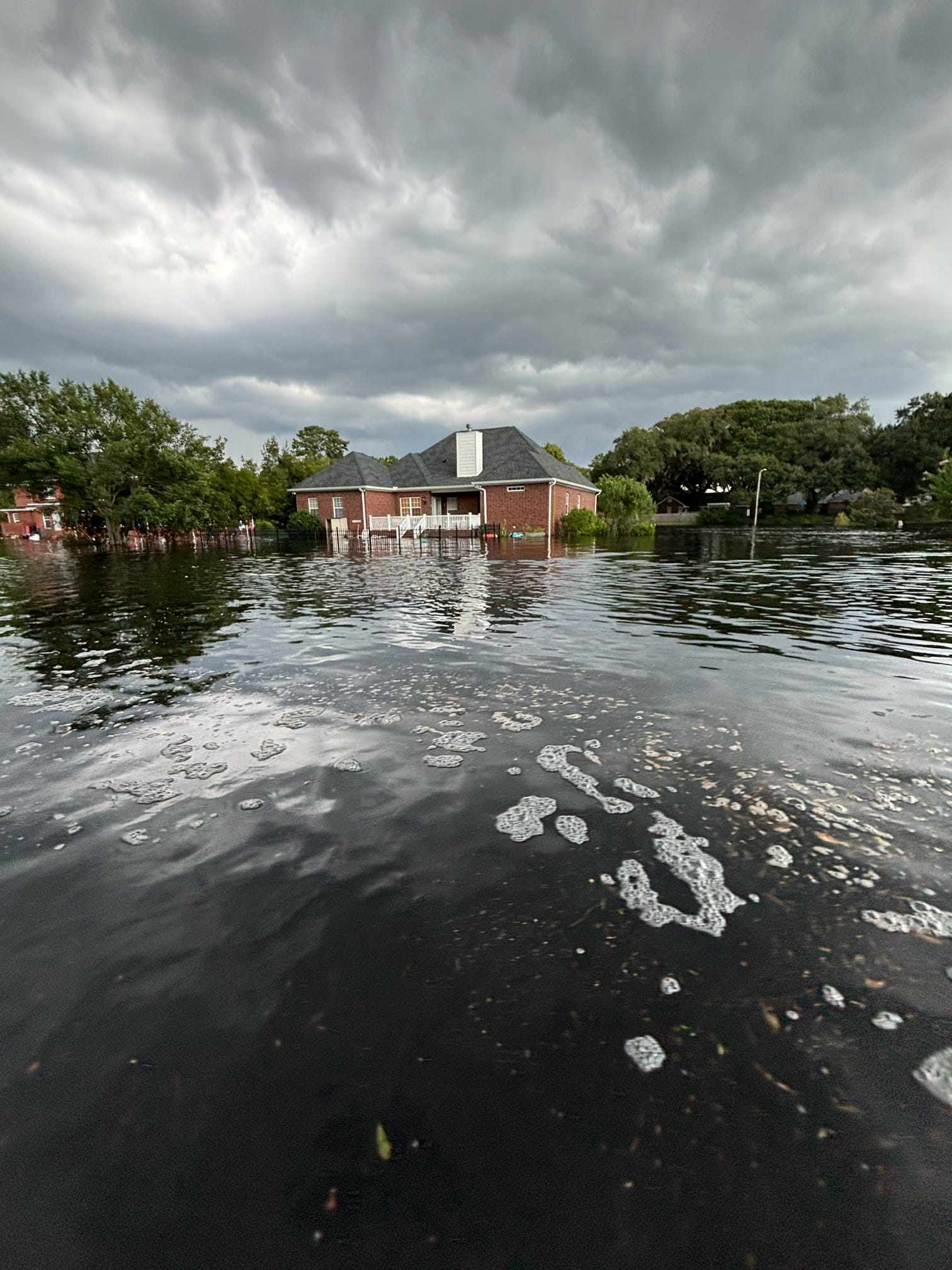
In the midst of the confusion, social media, specifically Facebook, spawned thousands of posts as residents scrambled to find information. In this chaos, grassroots networks of volunteers formed.
Churches opened their doors to collect and send out donations, and local businesses began delivering free meals for volunteers and those displaced by the flood water.
Residents from unaffected areas used their boats to hand out supplies to families trapped in their houses, some offering boat rides for school children to get to their newly issued bus stops.
During the week of August 12, I had the chance to speak with a handful of volunteers, but I must emphasize that these are only a handful. There are many unsung heroes that have and continue to care for their community members in the wake of devastation.
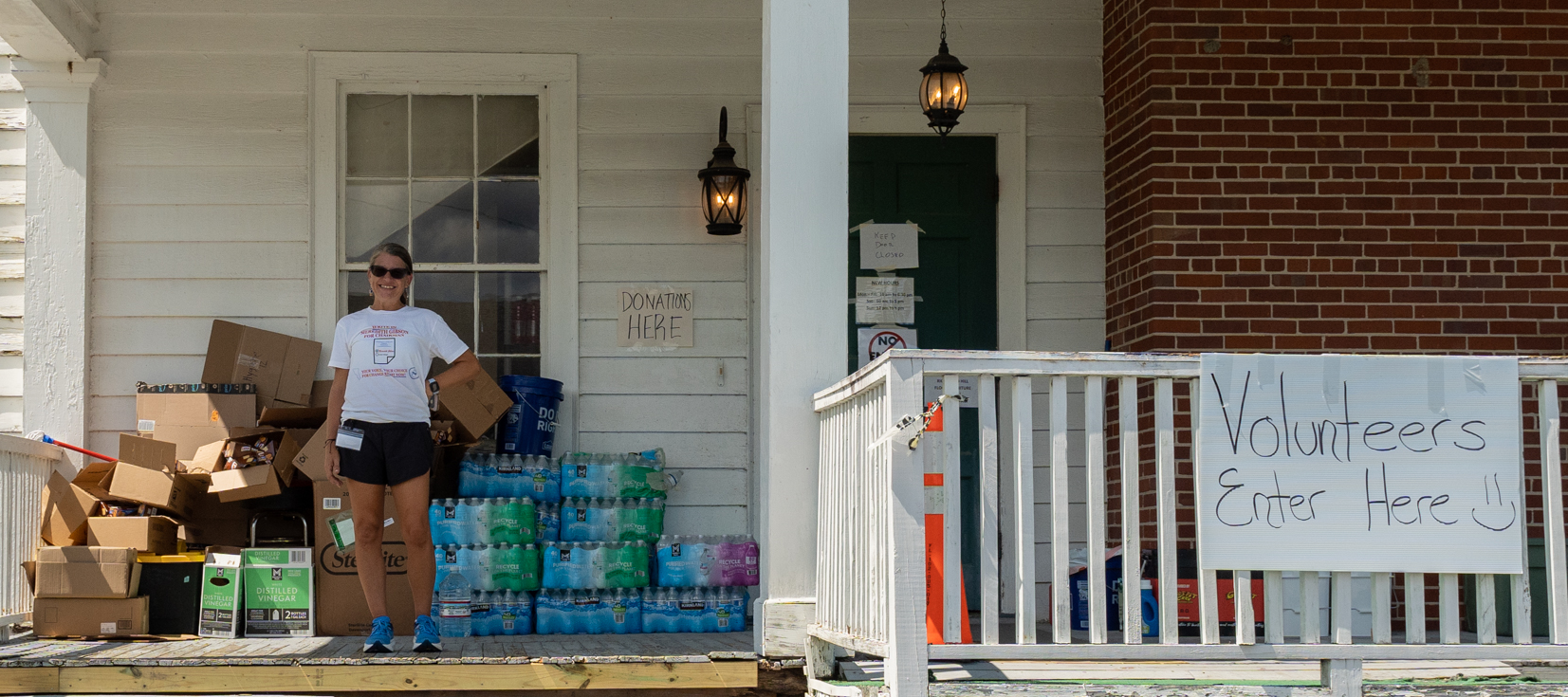
I'M INTRODUCED to Meredith Gibson on August 13. As volunteers sift through bags of clothing, carry boxes of Red Cross-issued MREs (Meals Ready to Eat), and shelve rows upon rows of cleaning supplies, Gibson mans the helm of the ship that has become the Richmond Hill Community House/Resource Center.
When asked how she ended up at the forefront of the relief effort in response to the flooding, her response was simple:
“Honestly, Dawnne Greene [Richmond Hill City Clerk] called me Friday morning [August 9]. She said, ‘We need your help. We need you to rally volunteers, and we need sandbags.’”
What began with her filling sandbags and gathering donations at the New Life Church quickly grew to Gibson becoming the Volunteer Director of Richmond Hill’s Resource Center.
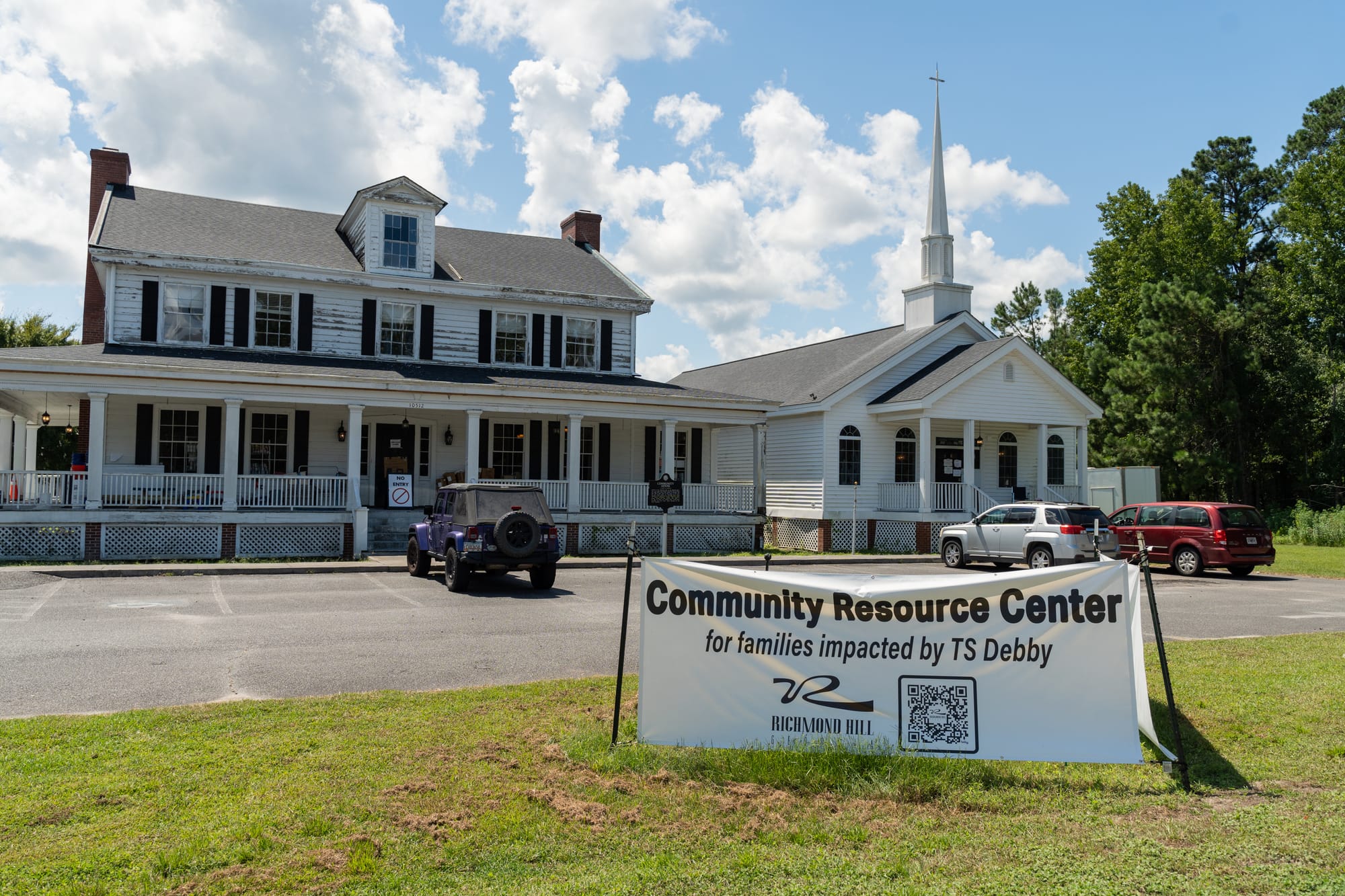
What you’ll learn about Meredith upon entering the Resource Center is that she doesn’t sit still, because with her new role comes immense responsibility – responsibility that she does not take lightly.
You’ll see her bouncing from room to room, checking in on fellow volunteers, having discussions with city and county officials, as well as offering a comforting smile for those who walk through the Community House doors.
Her new city-issued phone rings around the clock with questions, concerns, and information, as she works to provide those displaced due to the flooding with a safe and “judgment-free” environment.
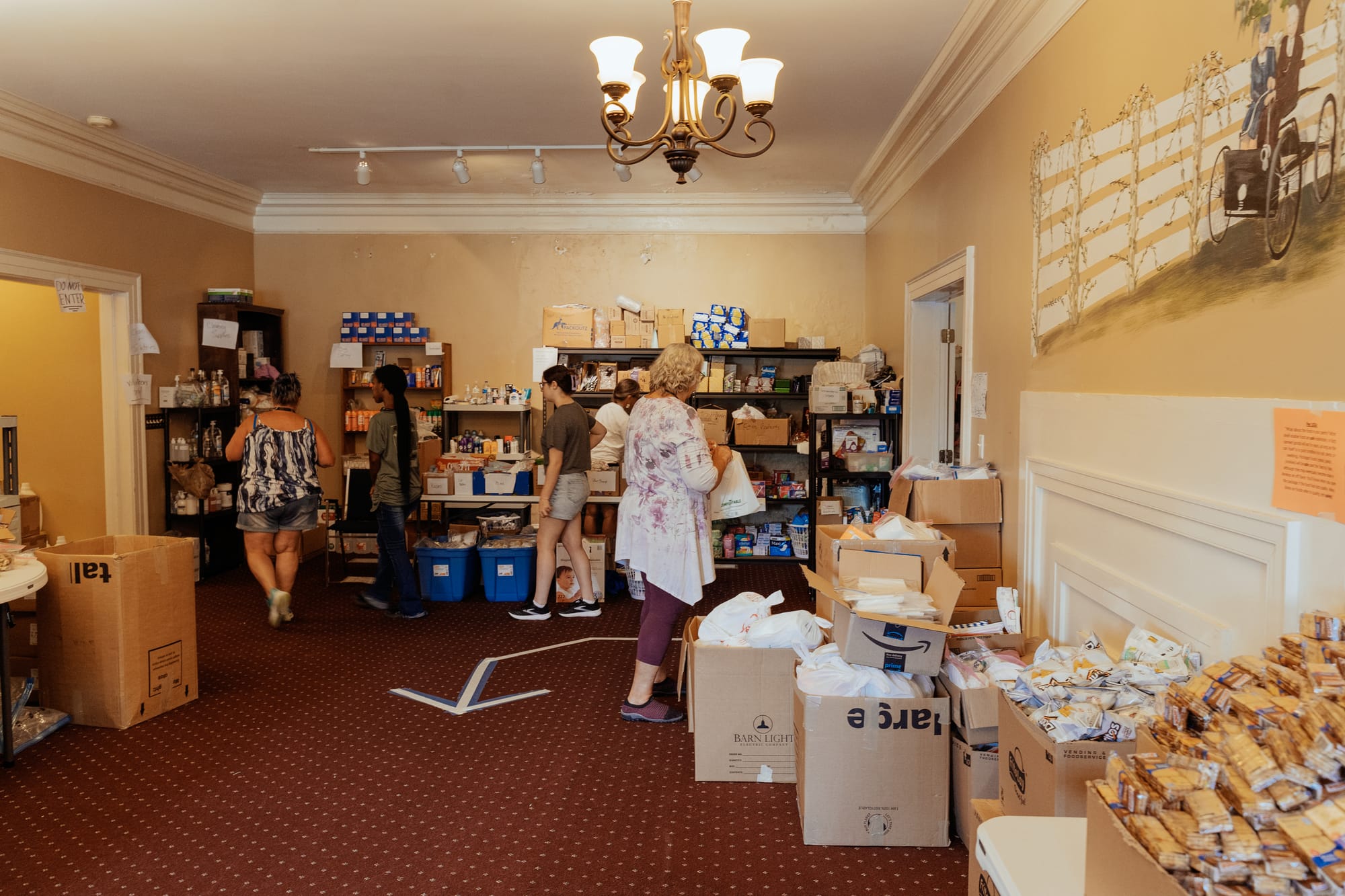
For Gibson, her experience as Volunteer Director has re-energized her faith in the community.
“I’ve made so many new friends. It’s like nobody cares how old you are, what color you are, what your political affiliation is, what you do for a living. Nobody cares about that right now. All anybody cares about is getting each other safe and making sure everybody has what they need.”
Gibson’s work has provided many with the information and resources they desperately need as they try to rebuild from disaster. Her name, for many in this community, has now become synonymous with relief.
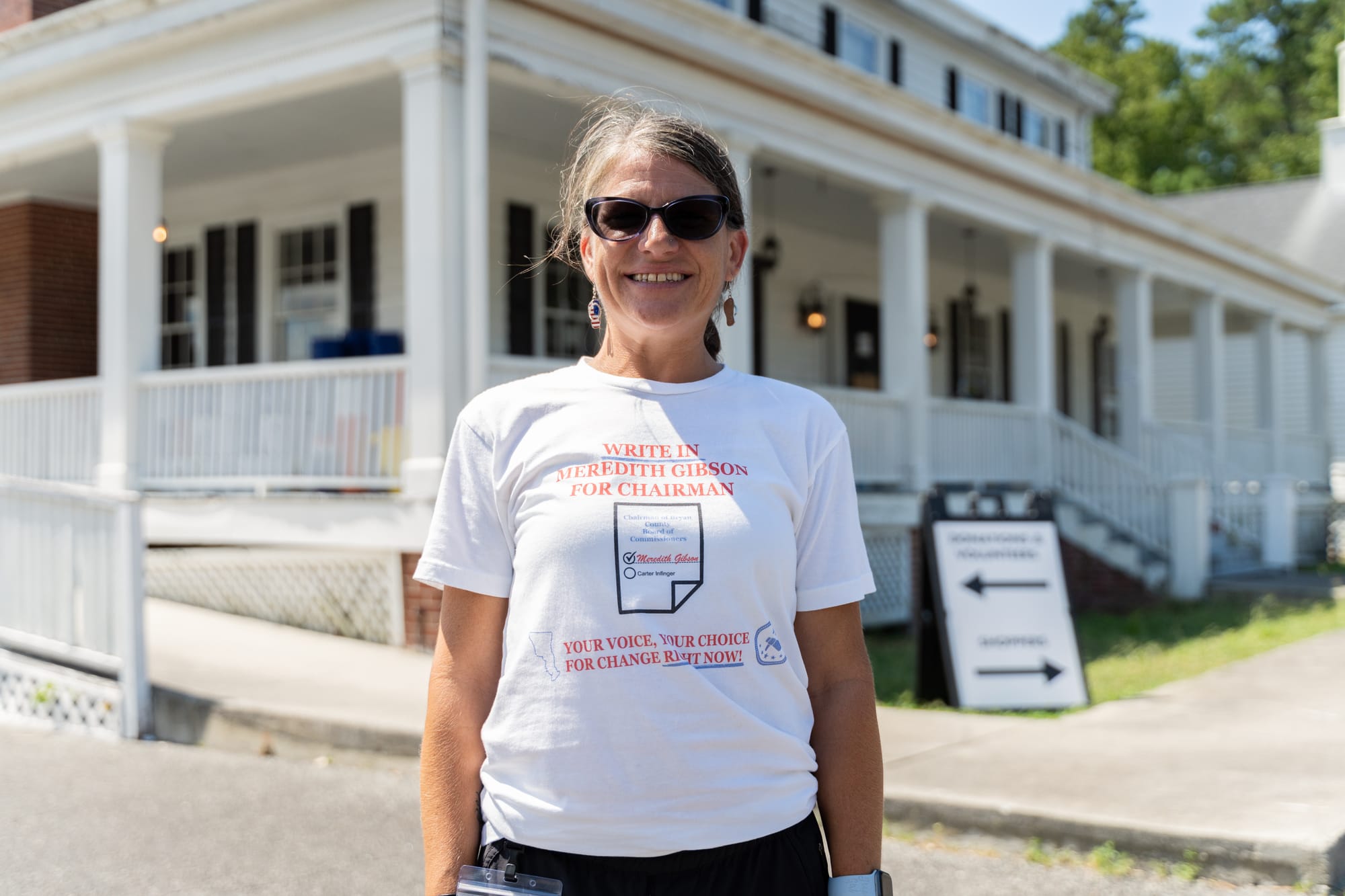
Though Gabrielle Ivory doesn’t live in Richmond Hill, when she heard that there were families reeling from the devastation of their homes, she knew she had to do something.
While the outpouring of support was already immense, Ivory noticed a gap she knew she could fill:
“I'm gonna focus on just feeding families hot meals.” And with that, Ivory got to work.
After posting her idea to social media, she amassed an army of volunteers and business owners.
“I had a lot of people inbox me asking how they can help. They might not be able to donate monetarily, but they have their vehicles or they have themselves. And so I, over time, got a lot of volunteers that were willing to help me cook,” Ivory said.
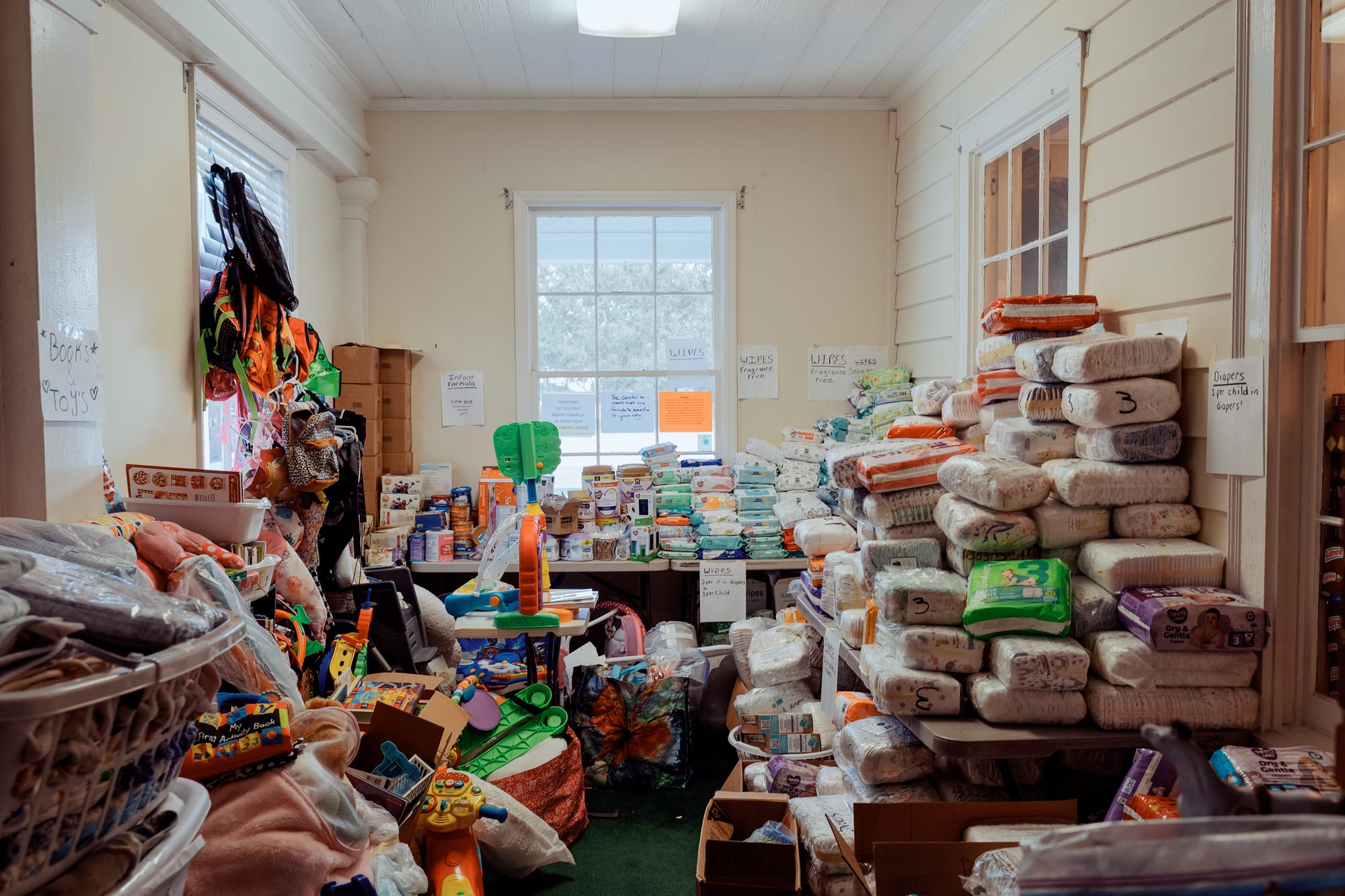
Ivory understands the power of food, the “difference between… going to your school lunch cafeteria, versus you going to your grandmother's house for dinner,” as she puts it.
Ivory wanted to provide families with a sense of comfort after experiencing such a traumatic event, and she knew a home-cooked meal could do just that.
“The first few days, it was civilians, and the community, and churches kind of taking charge, until the city and state were able to step in,” Ivory told me.
But by working in tandem with nonprofits, such as Bryan County Family Connection and the United Way, Ivory was able to provide hundreds of hot meals to families across eight different hotels over the course of four days before the Salvation Army stepped in to handle meal deliveries (though Ivory was fully prepared to continue her service for the long-run, having creating a schedule that would’ve lasted towards the end of the month of August.)
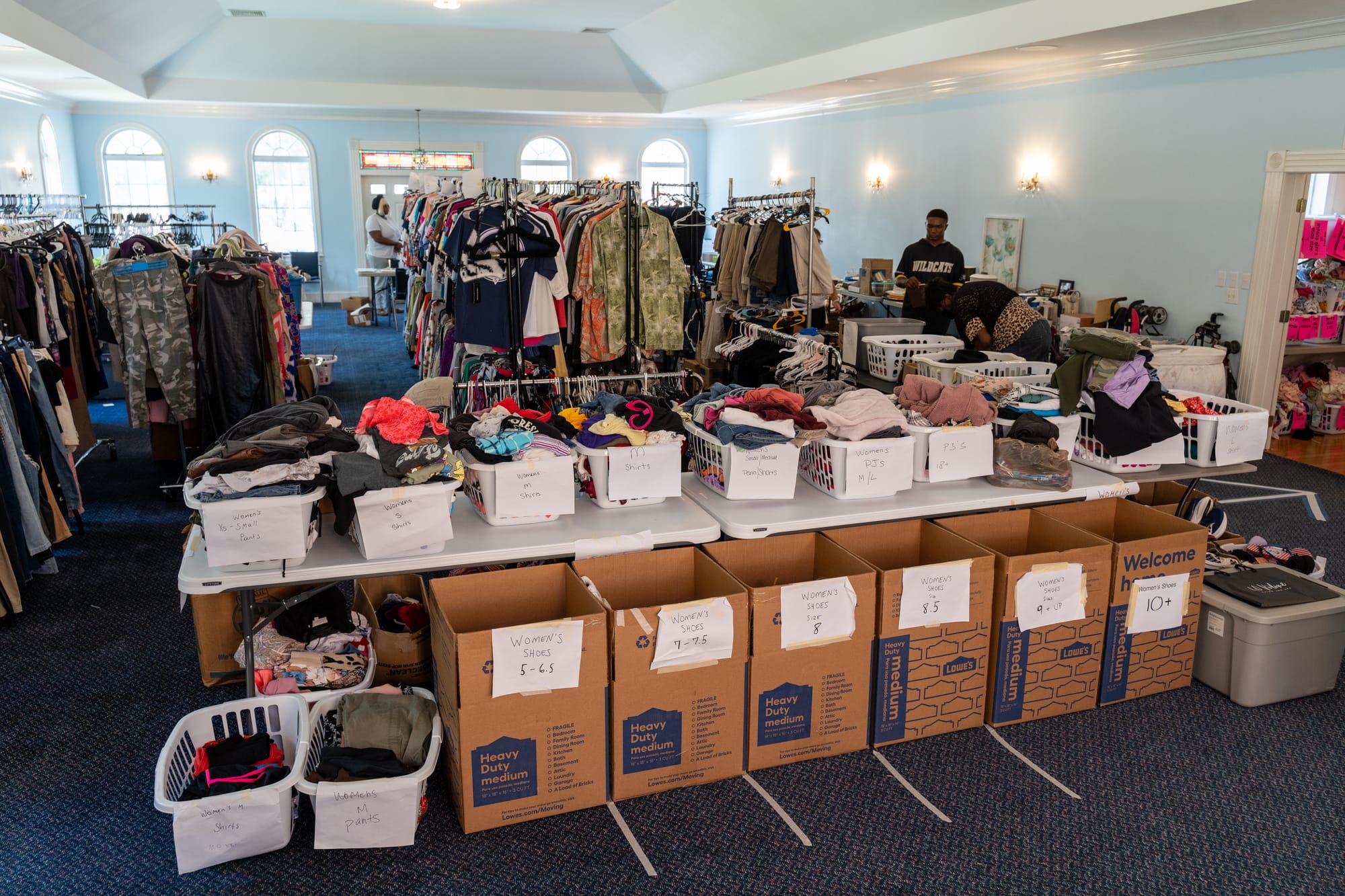
With her hotel deliveries on pause, Ivory is already planning her next steps. She shares with me that she’s prepping to revitalize her meal service for families as they transition out of hotels and into new housing arrangements.
Through her efforts, Ivory provided comfort in the wake of uncertainty.
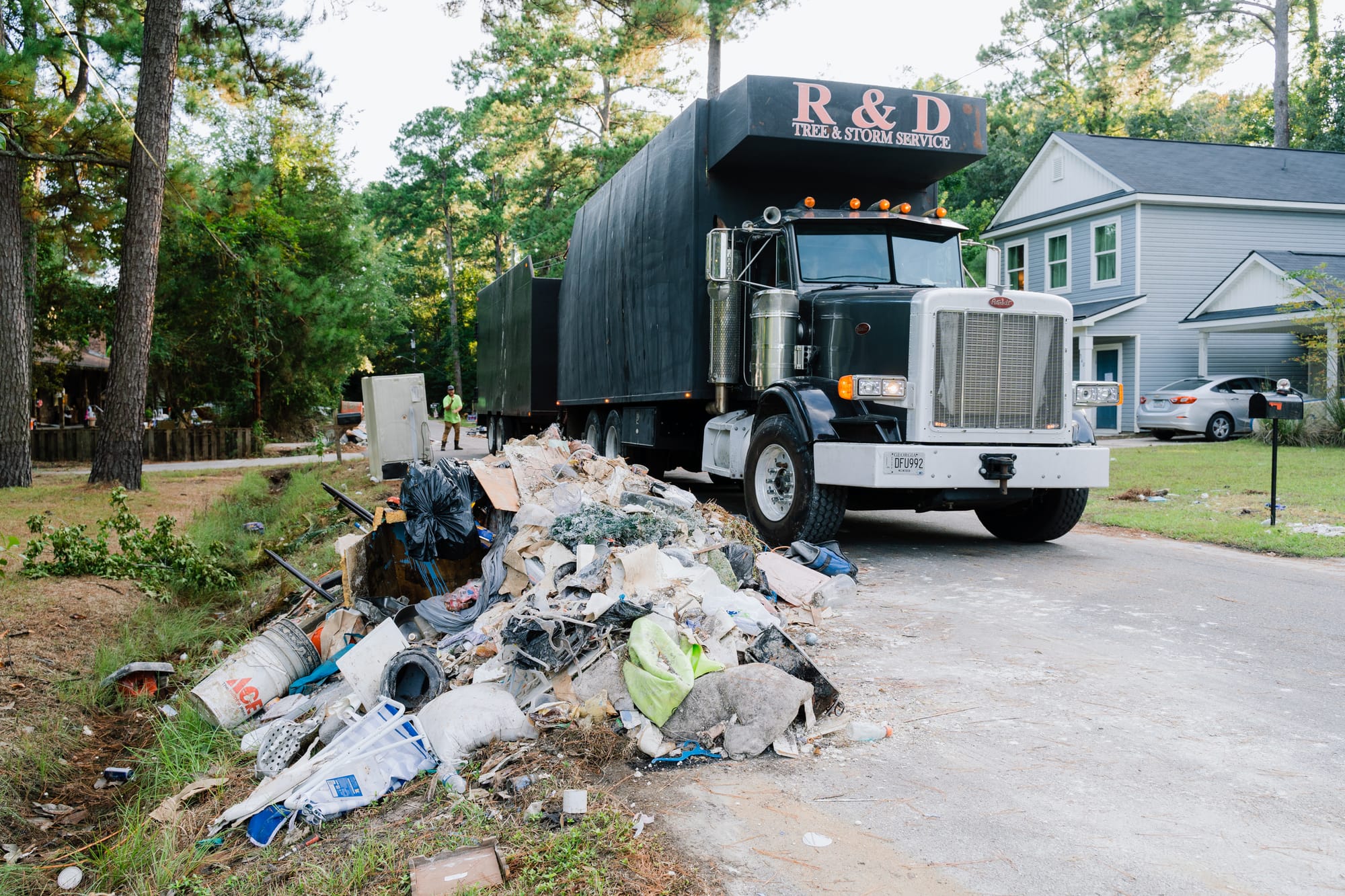
MEANWHILE, Kat Arnsdorff, born and raised in Richmond Hill, spent her week in the belly of the beast.
Arnsdorff quickly realized that there were residents in both Bryan and Chatham counties that were slipping through the cracks. After hearing reports from residents in Bradley Point that they hadn’t received the care they needed, Arnsdorff, along with a crew of fellow volunteers, assembled and delivered the supplies the community desperately needed.
“We got back through Bradley Point. Chatham County had the MRAP, the Fire Department, and everybody at the front of the neighborhood [with] full supplies. But when we got …to the back, there were people lined up in their driveways, clapping, cheering, crying,” Arnsdorff shared.
While on the scene, residents reportedly told Arnsdorff, “We lost hope. We thought they had forgotten about us.”
Arnsdorff’s work didn’t end with the residents of Bradley Point. Having created a point of contact via social media, Arnsdorff and fellow volunteers were able to build an operation that focused solely on getting communities what they needed, when they needed it.
“Emergencies are happening through the night as well, you know. These people need supplies for the evening. They didn't get to take anything with them," she said.
"We were getting addresses… and we were keeping record of everything so that we could mark it down and make sure that that each person got exactly what they needed…We packed exactly what that person needed and got a vehicle to them, whether it was kayak, boat, or Jeep.”
Providing water rescues, sandbags, and food and water drop-offs in the middle of the night, Arnsdorff contributes her ability to provide to the community itself.
“We filled sandbags for days… we had people that were 74 to 76 years old, and then we got 6 and 7 year-olds. Everybody’s on the spot, working as hard as they can and just making it happen without question, without judgement, without a second thought, just acting.”
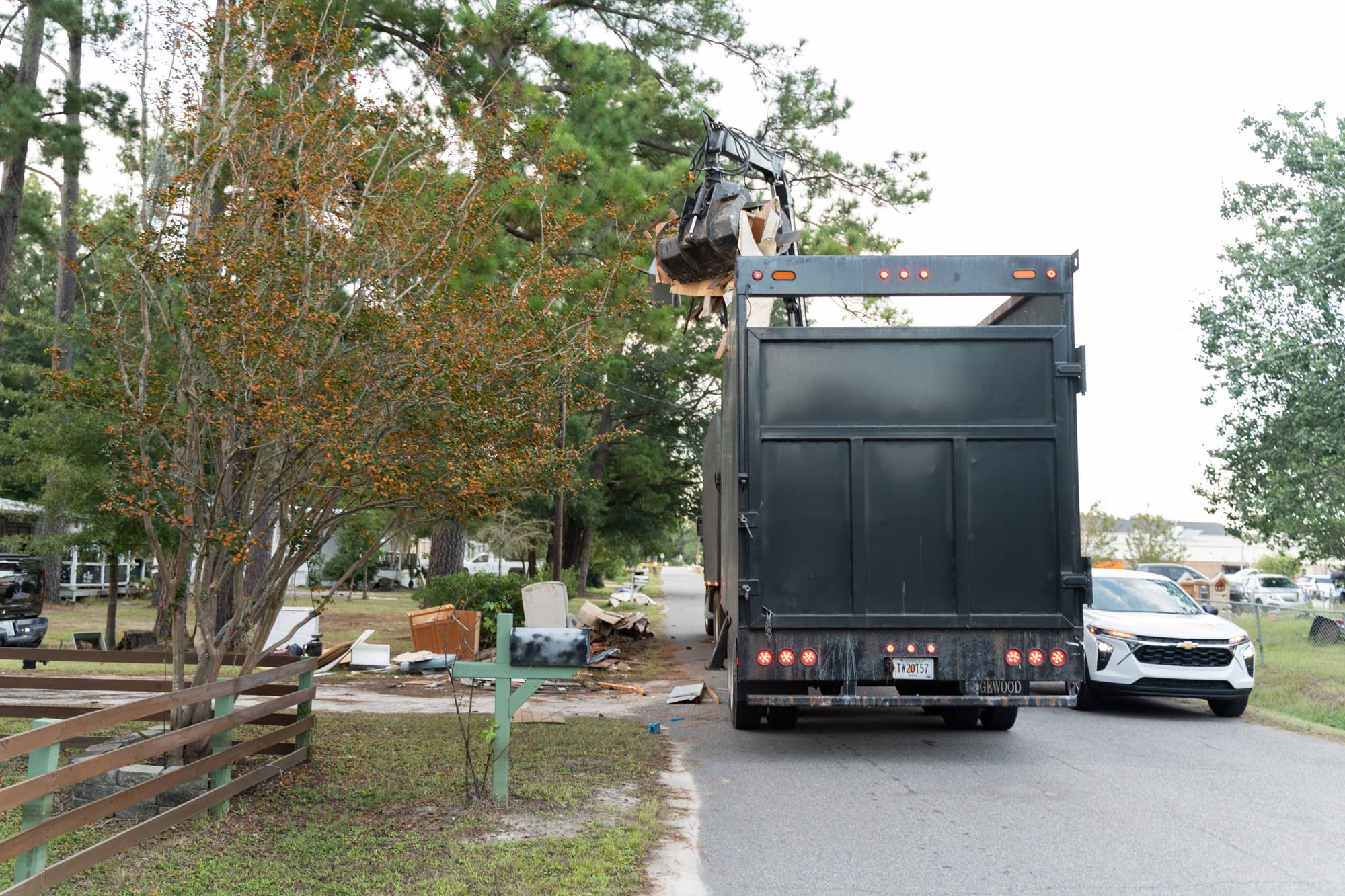
Arnsdorff also reassured me of the amazing efforts of the law enforcement and fire departments on the ground.
“First responders were out in those boats. They were out trying to get everybody help too. They were loading sandbags. They were doing everything right there with us.”
Her and her crew’s resilience in the face of an unprecedented crisis changed the course of numerous lives. For Arnsdorff, it didn’t matter who needed help, within Richmond Hill city limits or not. All that mattered was that those in need got what they needed.
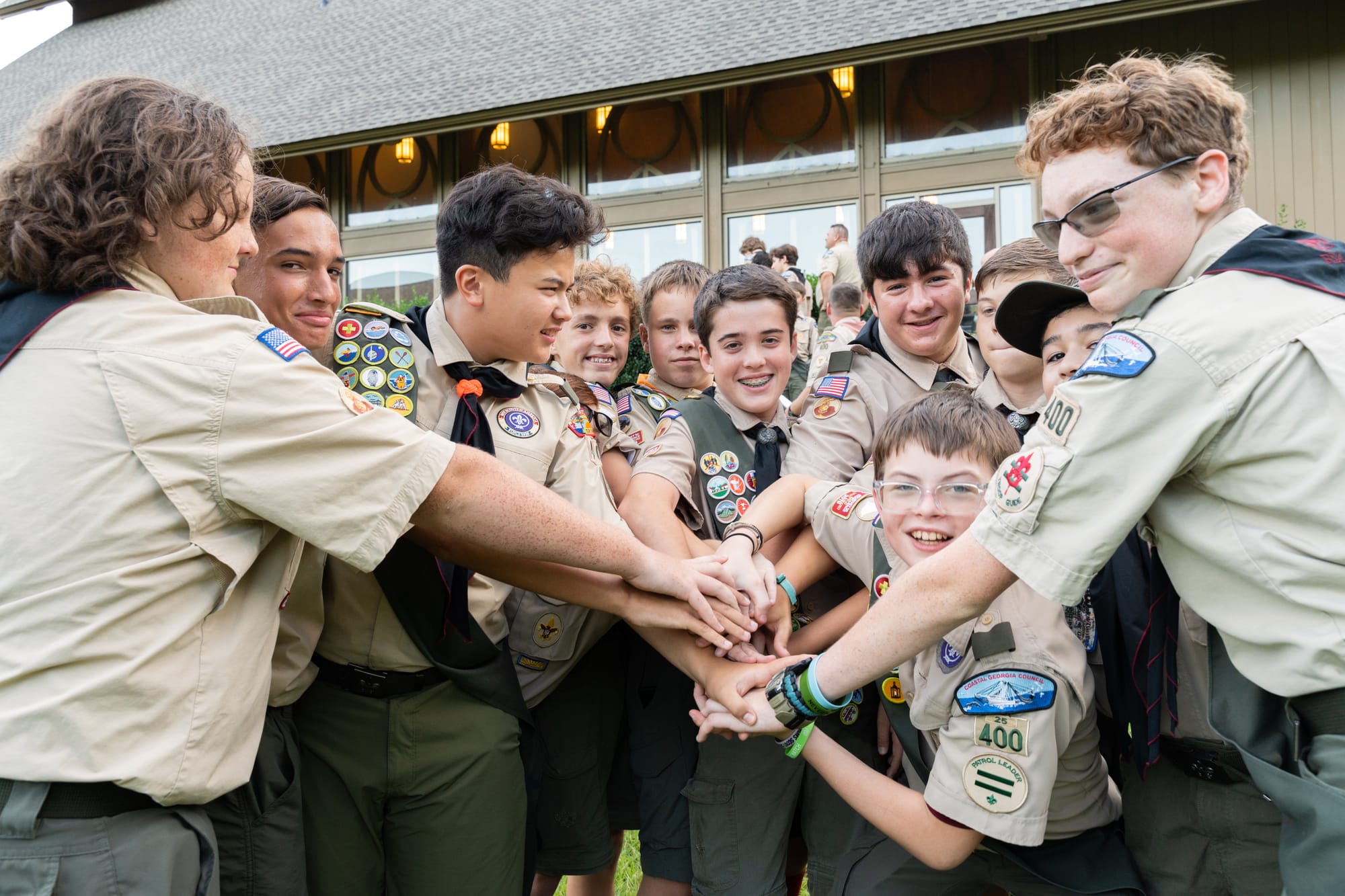
IT'S AUGUST 16, and Boy Scout Troop 400 were supposed to be having a weekend filled with fun. Instead, Luke Davis and Aiden Kaye, both freshmen at Richmond Hill High School, have agreed to speak with me.
Both boys are a part of Troop 400 in Richmond Hill, and after a fellow resident shared with me reports of their particular involvement in the relief efforts, I knew I needed to get further details from the source.
“I got a text [from Jake, a fellow Boy Scout] somewhat late,” Davis begins. “It was, hear me out; I have an idea. And he said specifically to get boats and drive supplies into a neighborhood, and that was his entire idea.”
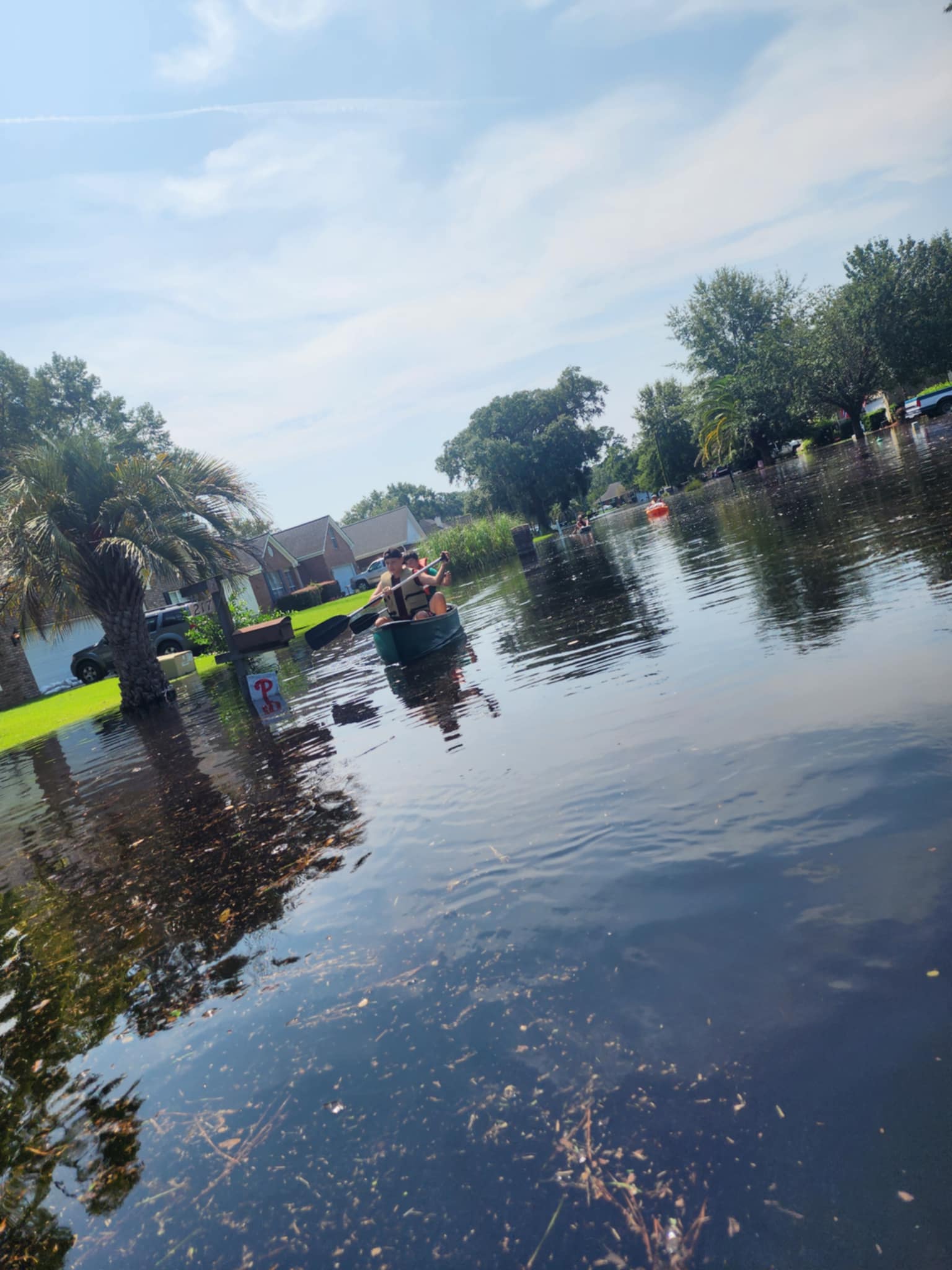
The next step, of course, was coordinating with their Scoutmaster, Jason Whitaker, and other adults in leadership to create a course of action.
So, within the span of about 12 hours, Troop 400 had devised a plan, found a location, and gathered supplies to fulfill their mission.
On August 11, from 10:30 am until 6:30 pm, Troop 400 and Girl Scouts from Troop 242 spent their Sunday in and out of canoes in the Mulberry neighborhood.
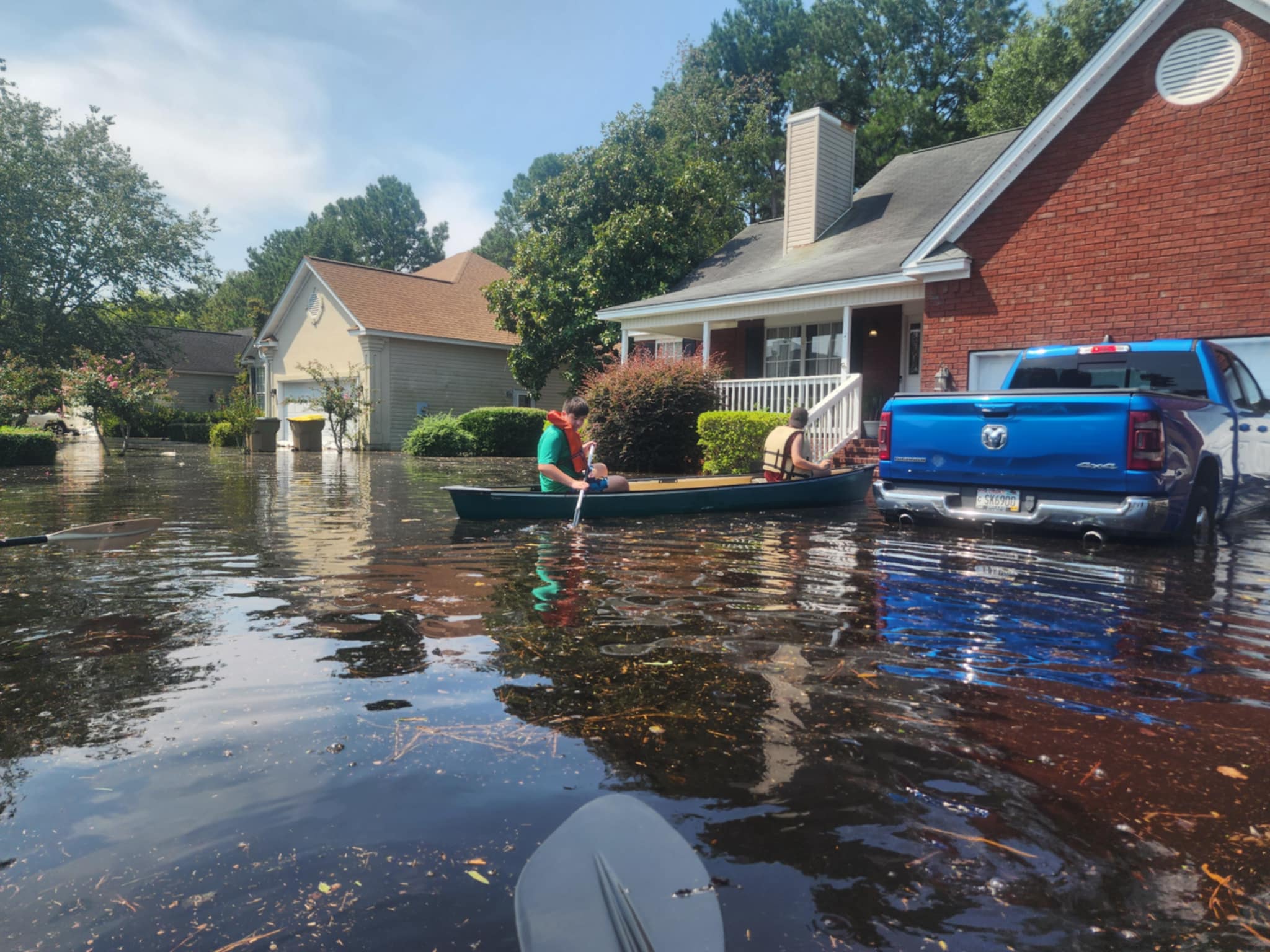
Ressa Kaye, one of the adults onsite and an EMR instructor at Richmond Hill High school, also spoke with me about her experience that day.
“When we got there, we realized there was no command center set up,” Ressa shares.
After sending the adults onsite to assess the condition of the neighborhood, and with the help of another resident (a local pastor and former Marine), the team was able to set up a supply point on a dry patch of land within Mulberry, as well as a home base in the Family Dollar parking lot.
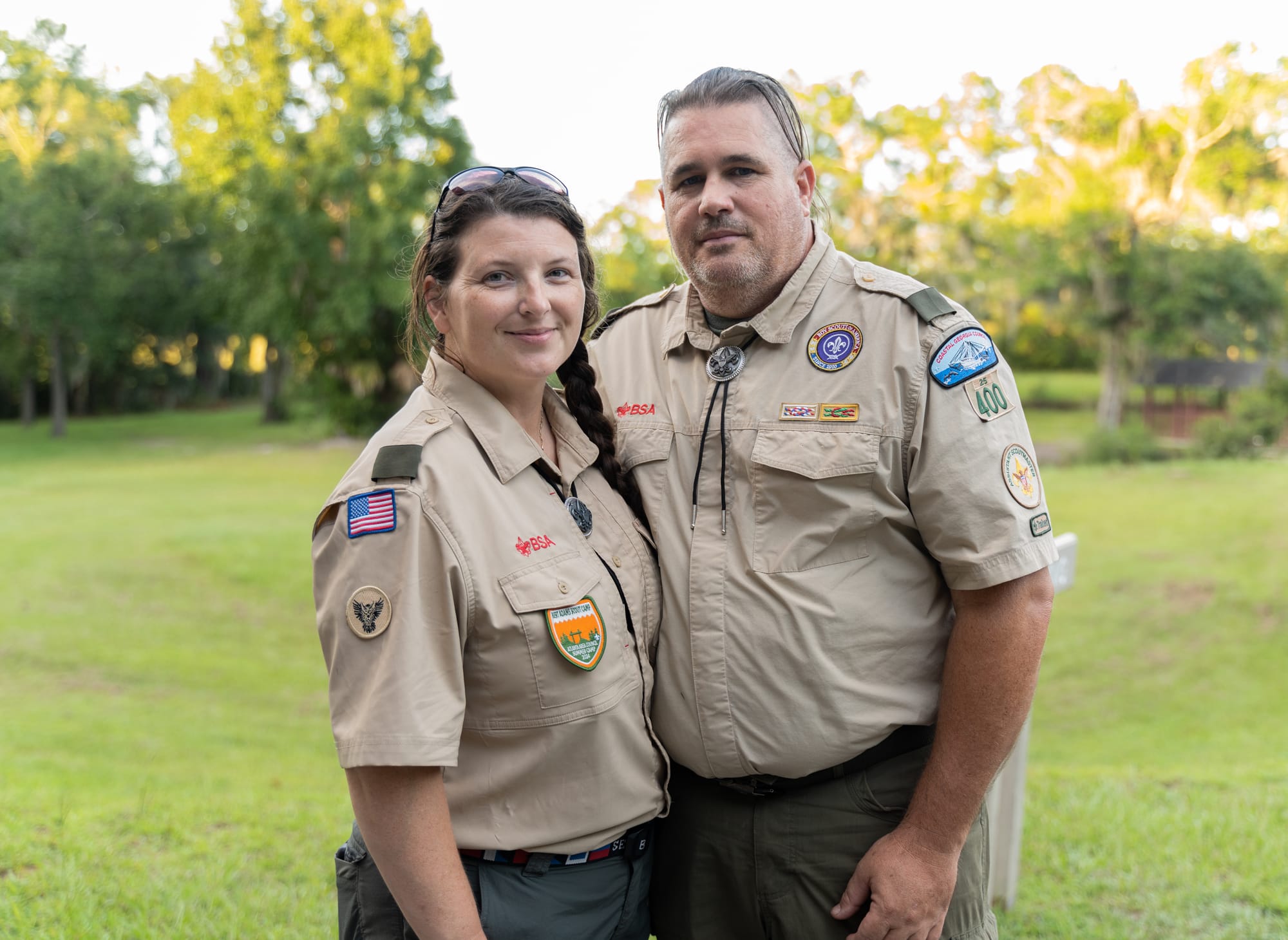
With hope ignited, residents of Mulberry mobilized to alert one another of Troop 400's presence.
“Residents started texting each other, and then we started getting on their Facebook page…we dropped a pin for our dry spot. The residents got there and started helping us organize it, and once we got it organized the kids kept pushing stuff in, water and food. We even got some diabetic cat food for one lady because her cat was on insulin.”
“Were you scared at all?” I asked the boys.
“Not really,” they replied. “It was just really gross.”
Though that doesn’t mean there weren’t any scary moments.
“We did have a resident have a diabetic issue because of the heat and her blood sugar dropping, and we actually evacuated her out ourselves and took her to the doctor,” Kaye shared.
“When we were pulling her out, the fire department came in and was pulling somebody else out.”
Troop 400's Sunday operation was a hit, if for no other reason than because it reassured Mulberry residents that they weren’t alone.
“One of our scout leaders, Chris, lived in the neighborhood, and when we got there, you could see how exhausted he was, because him and a couple other residents were trying to help those that were flooded in [but] they only had so much,” Kaye said. “So when we got there, they were able to rest and let us help, and the next day, Chris and his crew could take back over.”
What Troop 400 accomplished that day was a feat unto itself, and while the boys were fully prepared to do it again, these young heroes had school in the morning.
“We got a message saying, ‘hey, we need this.’ And [my husband] was like, unfortunately, all of my volunteers are back to school,” Kaye told me.
Furthermore, the safety of their members was Troop 400's top priority, and as conditions began to deteriorate Kaye and the other adults knew they would be unable to continue Troop 400's operation.
Though Troop 400 wasn’t able to continue their supply runs, the boys found a new way to serve their community. Now stationed at Richmond Hill Community House, Troop 400 spent their time organizing the piles of donations that are delivered daily.
“[Troop 400] were supposed to go, believe it or not, to an aquatics camp,” Kaye shared. “They had a hard time thinking about going camping, knowing that they could be do something this weekend. So they canceled their camp-out, and told every boy they needed to pick up at least one shift" at the Community House.
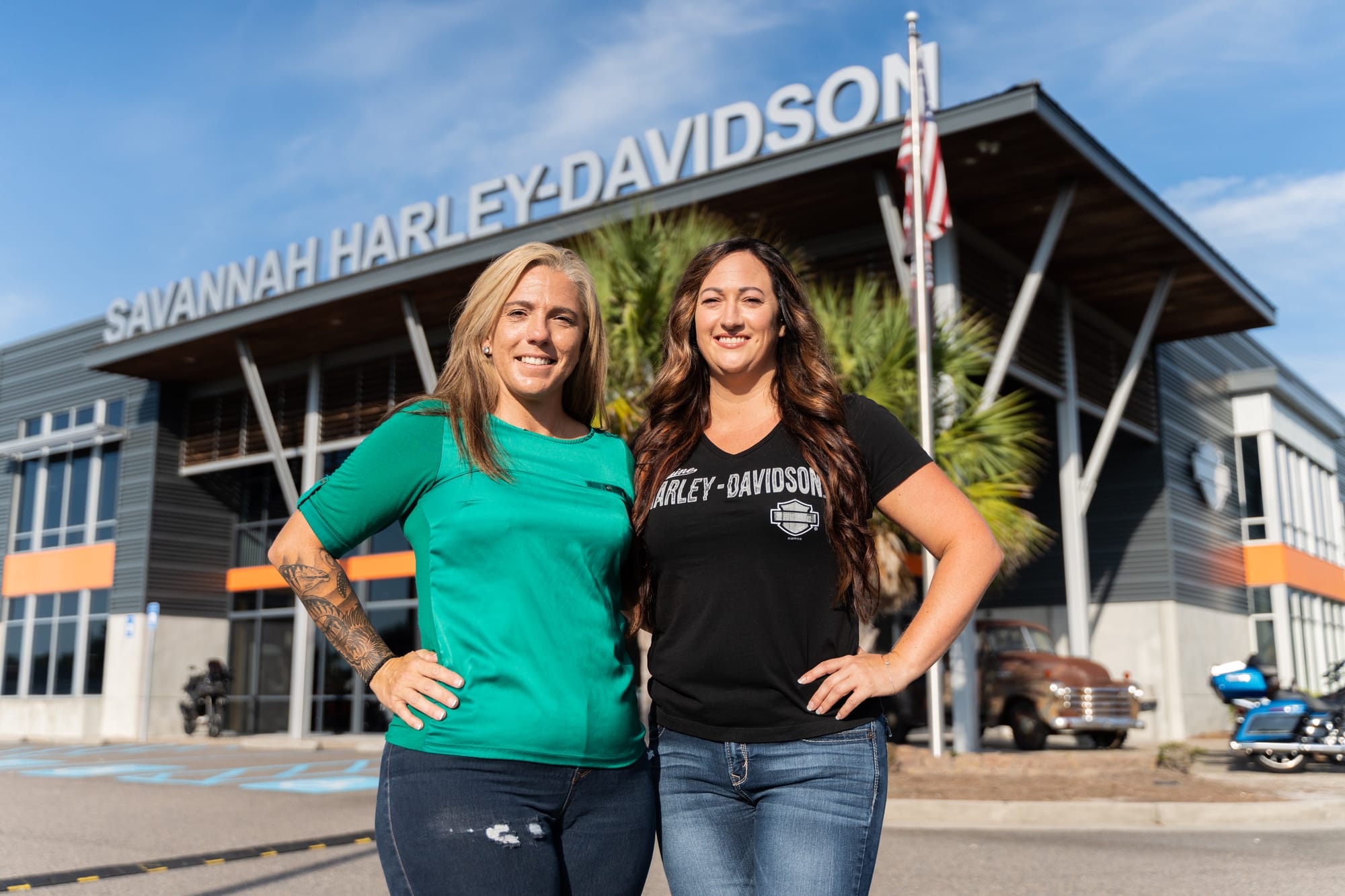
ABOUT 20 minutes outside of the city limits of Richmond Hill, based at the Savannah Harley-Davidson, is where you can find Ashley Dean, a realtor who has lived in Savannah her whole life.
While her home was spared from the overflowing Ogeechee, many of her family members live on Shad and Bush roads – two highly affected areas due to flooding. “We’ve lost two houses on Bush Road,” Dean shares.
After taking donations to Richmond Hill, she noticed a stark difference between the relief efforts for residents along Highway 204 and the relief efforts for those directly in Richmond Hill:
“There were hundreds of people bringing, dropping off, running stuff to people in their homes, four or five boats, all in one neighborhood. And I just, I was just like, it's a ghost town in our area – where my mother lives, and my aunt, and my cousins.”
Dean then began focusing her attention on providing aid for those residents who live along 204.
“We had probably ten families parked down in an abandoned store right at Shad Road, sleeping in their cars. One gentleman, Mr. Kemp, was smart enough to bring his camper up to the front. So he was living in his camper.”
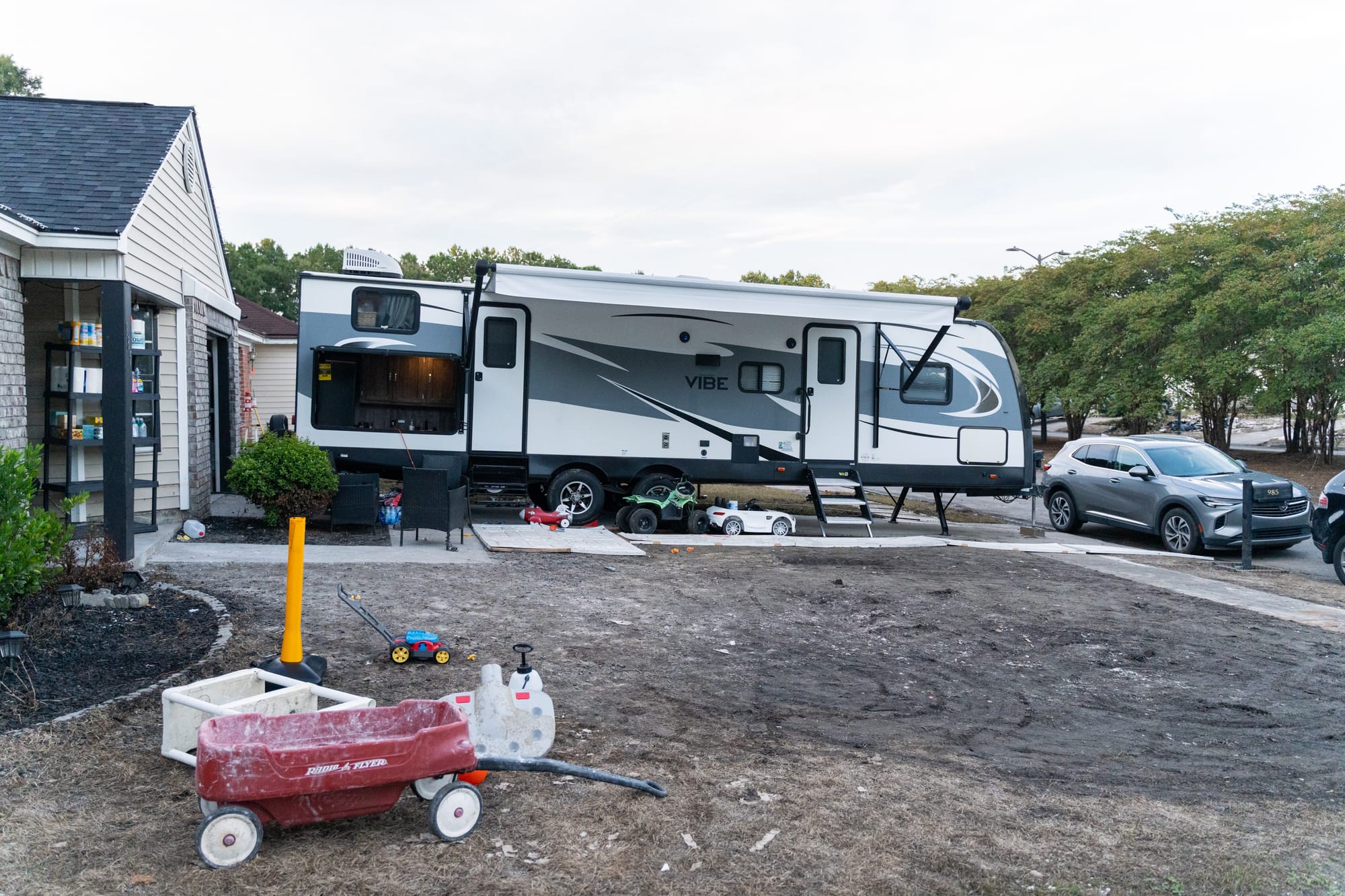
Working to fill the gap, Dean has made her cause visible. After posting on Facebook, she was inundated by questions on how and where to help.
As for why she set up camp at Harley-Davidson: “My father works here. [Harley Davidson] saw my post, and Heather Choquette, their events coordinator, reached out to me.”
Dean’s volunteer work has also put her in contact with others who are working to ensure the safety of their communities.
“There is another young lady named Catherine from Bryan County, on the west side of Bryan County, she is actually working with the National Guard to set up shelters for the people that live in Morgan's Bridge and areas like those who are sleeping in their cars.”
Dean’s experience with county officials echoes the sentiment of many volunteers and residents I’ve spoken to. She retells the experience another community member had while trying to get in contact with Chatham County Commissioner Dean Kicklighter:
"[The resident] called this person, to call that person, to call this person, to get the commissioner's phone number. When they finally got in contact…he was like,‘Well, we can get out there; I've been out in the community.’”
The resident then responded, “‘No, you haven't been out here.’”
Dean's primary focus remains on gathering supplies for those who are still struggling along the 204, as she continues to fight for her community because she knows somebody has to.
These volunteers have created a tapestry of aid, a spider web of support created to cushion the fall of those who have had their lives upended by the flood. Woven by a single idea spawned in the middle of the night, by kids driven by ideals taught after school, by neighbors looking out for neighbors.
As first responders worked tirelessly to ensure the safety of those living in Bryan County, the community took it upon itself to create networks of relief – demonstrating the importance of mutual aid.
Their presence helped fill a void, one that some residents feel was created by a lack of preparation on the county and city level.
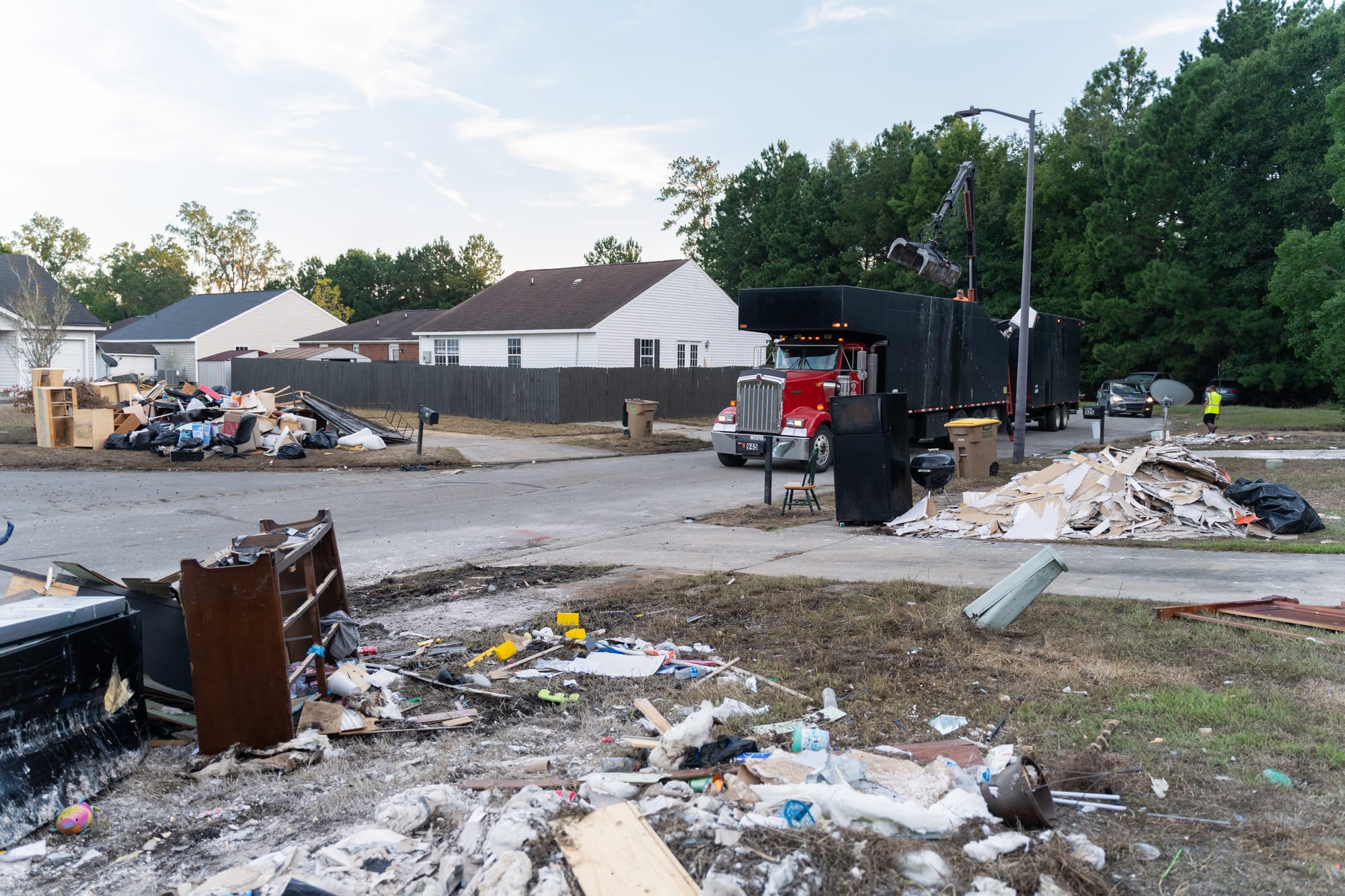
MICHELLE HYDEN'S family moved to Richmond Hill in 1974 and never left. After a fire destroyed their original home in the neighborhood of Blueberry, they moved to Carter Street.
“My stepfather rebuilt our house,” Hyden shared, “Everything except for the brick and the electrical wire he did with his own hands. We were able to move back in 1985, and my mother's been there on that street since.”
Hyden’s mother, the oldest of ten children, dropped out of school to take care of her family. By her late 50s, she obtained her GED and became a CNA.
In 2004 Hyden’s mother drove school buses for the Bryan County school system.
“She was there for Bryan County until she got up in age and just couldn't move around anymore,” Hyden said.
Hyden and her mother lost their home due to the flooding, a loss that has left her and her family reeling from heartache.
“Everything my family had they worked all their life for, and worked hard for it. That home was kind of like my mama's dream home.”
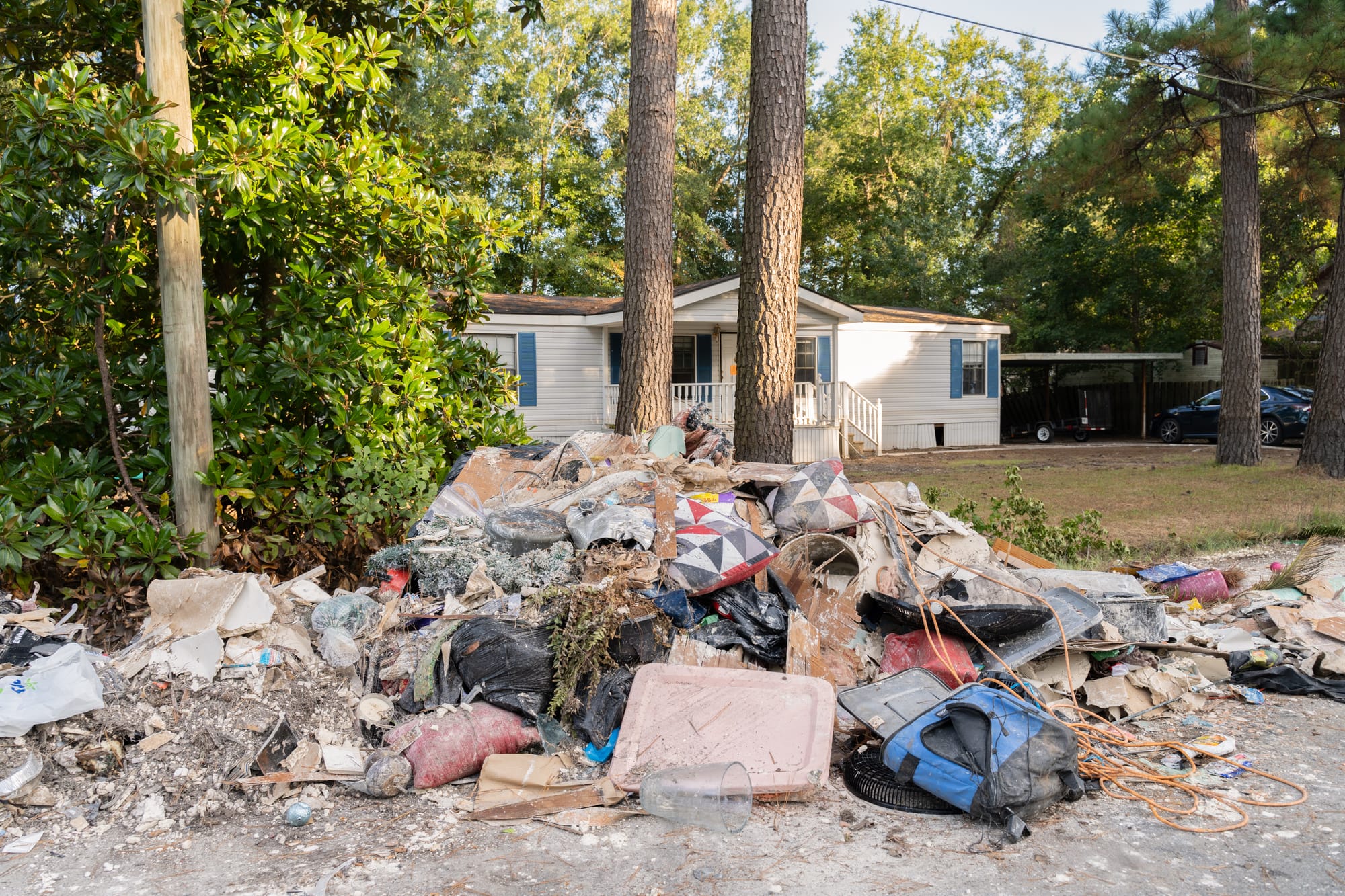
For Hyden the loss of her mother’s home is bigger than simply losing property.
“I tell people I'm still young enough that if I had to go get an apartment and start over, I can do that, but my mother cannot. That's why I'm trying to reach out to every government agency, anybody that'll listen to my story, so when the time comes, my mother will not be overlooked the way she's been overlooked in the beginning of this.”
Hyden informed me that many residents of Carter Street feel as though they have been overlooked by the City of Richmond Hill, and have felt this way long before the flood.
“I know we had to raise hell about three, four months ago for them to come and clean out our ditches,” she said. “I had to raise hell a month or so ago, because it's the city's responsibility to keep the grass cut from by the road, and they don't do it. That's just like they don't even spray for mosquitoes down our street.”
Hyden’s claims were corroborated by other residents I spoke to who live on or near Carter Street. For these residents, those who live in the Rushing area, on Carter, 1st, 2nd, and Camelia streets, the response to the flooding only reinforced a feeling that had been brewing for years.
“We feel forgotten about,” a resident shared with me after trying to get information about Richmond Hill’s pumping efforts. Forgotten not by volunteers, like those who were listed in this article, but by county and city officials.
This sentiment was reiterated time and time again at the Richmond Hill City Council meeting on August 20.
A common refrain amongst city officials in Richmond Hill and officials in Bryan County has been the following: no drainage, no plan, no infrastructure on earth could have handled the amount of water Richmond Hill received due to Tropical Storm Debby. Nor could county or city leaders have predicted that the flooding would cause devastation to the extent it did.
Yet Samuel James, a resident of Live Oak, assured me that he knew a disaster was on the horizon.
“I filmed the Claxton River at its crest [around August 8]… and when I came back home that day, about twenty minutes later, that’s when they closed Morgan’s bridge,” James told me.
“So I just started warning my neighborhood. I was like, ‘Hey, you know, something’s coming down this river; it’s a lot of water.”
Shana Cawley, a fellow resident of Live Oak, didn’t believe him at first. But after she witnessed how fast the water began to rise in her neighborhood, she quickly turned into a believer.
“I told him, ‘I will never doubt you again. If you tell me to get the hell out, I will. I will because you called it.’”
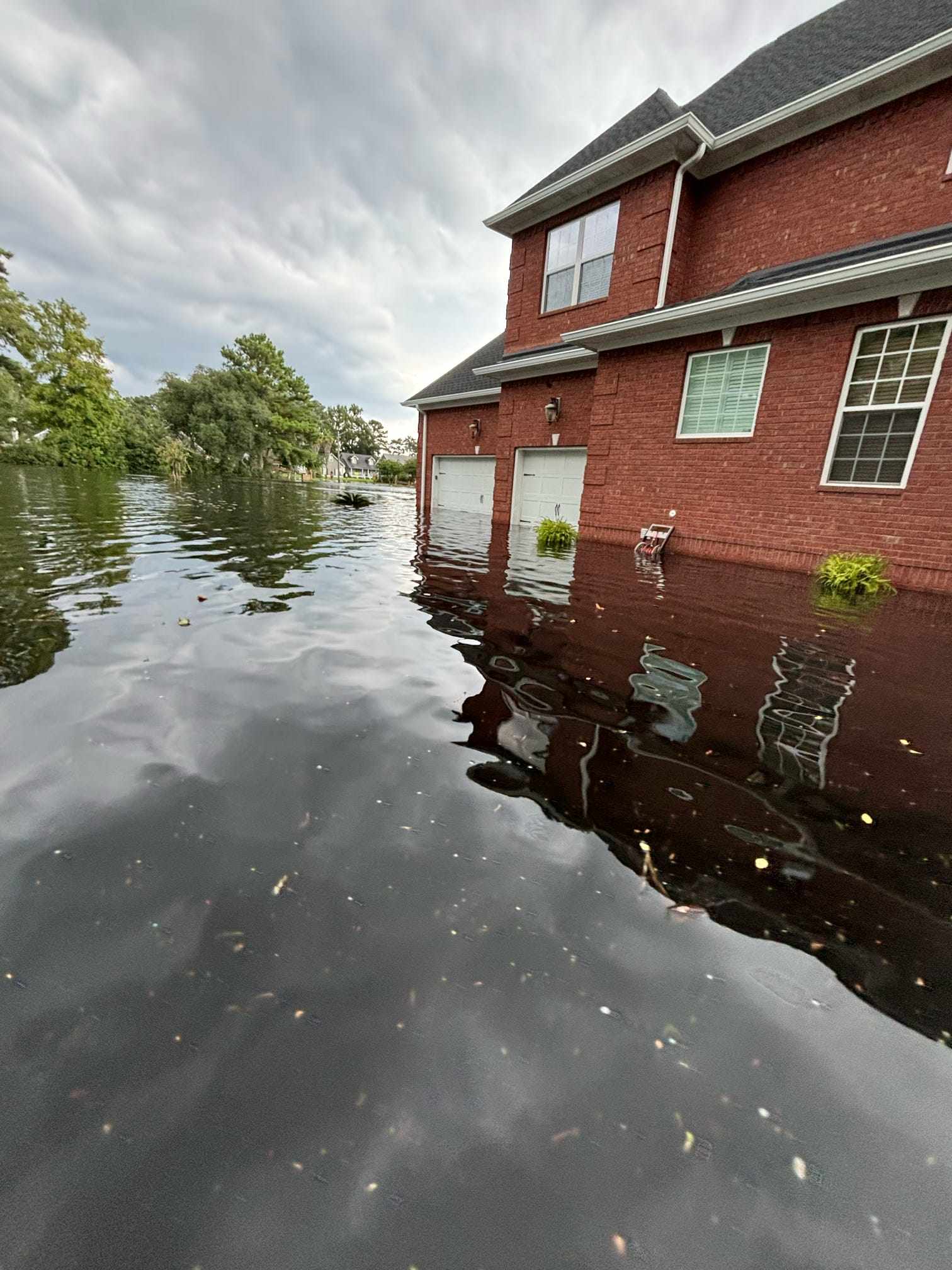
“I hunt and fish these swamps,” James continued. “I understood how much water was coming down this river, but the city downplayed it the whole time. They never warned us about this, and now I’ve got three feet of sewage water sitting in front of my house.”
The trust between county and city officials here in South Bryan has been fractured, and the response from these pillars of leadership have left many who live here with more questions than answers.
How did we get here? What steps were or weren’t taken to mitigate the damage? And what does the future hold for all who live here?
In the next article in this series, we’ll explore these questions and more. Stay tuned.

